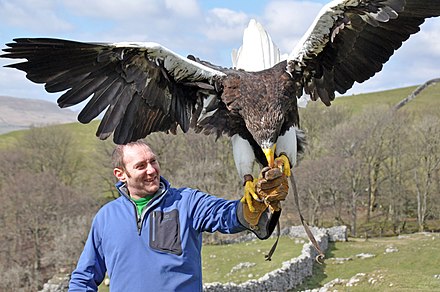Steller’s Sea Eagles are known for their impressive size, powerful build, and striking appearance. These magnificent birds can live up to 20-25 years in the wild, with some individuals reaching an impressive lifespan of 30 years. In this comprehensive blog post, we’ll delve into the factors that contribute to the longevity of Steller’s Sea Eagles and explore the challenges they face in their natural habitats.
Lifespan of Steller’s Sea Eagles
Steller’s Sea Eagles are long-lived birds, with a typical lifespan of 20-25 years in the wild. However, some exceptional individuals have been known to reach up to 30 years of age. In captivity, these eagles can live even longer, with some specimens reaching over 30 years old.
The longevity of Steller’s Sea Eagles is influenced by a variety of factors, including their habitat, prey availability, and environmental conditions. Let’s take a closer look at these factors and how they impact the lifespan of these majestic birds.
Habitat and Distribution
 Image source: stellers sea eagle
Image source: stellers sea eagle
Steller’s Sea Eagles are native to the far eastern regions of Russia, primarily along the coasts and nearby islands of the Bering Sea and the Sea of Okhotsk. Their preferred habitat includes rocky seacoasts and rivers in the northeastern Siberian region, particularly on the Kamchatka Peninsula.
During the winter months, these eagles migrate to Japan, where they are revered as a national treasure. The availability of suitable nesting sites and access to their primary food sources are crucial factors in determining the overall health and longevity of Steller’s Sea Eagles.
Conservation Status and Threats
Steller’s Sea Eagles are currently listed as a vulnerable species by the International Union for Conservation of Nature (IUCN). This status is primarily due to the various threats they face, including habitat loss, industrial pollution, overfishing, and climate change.
Habitat alteration, such as the construction of hydroelectric power projects and logging activities, can significantly impact the nesting and foraging areas of Steller’s Sea Eagles. Additionally, industrial pollution and the depletion of their prey sources, such as salmon and trout, can further jeopardize the survival and longevity of these birds.
Climate change is also a growing concern, as it can affect the availability and distribution of their food sources, as well as the success of their nesting efforts. Steller’s Sea Eagles are particularly vulnerable to these environmental changes, which can ultimately impact their lifespan.
Diet and Behavior
Steller’s Sea Eagles are primarily piscivorous, meaning they feed primarily on fish, particularly salmon and trout. However, they are also known to consume water birds, land birds, small mammals, and even carrion on occasion.
These eagles are monogamous and form long-lasting pair bonds. Their courtship rituals typically occur between February and March, and they build their nests, called aeries, high in trees or on rocky cliffs. Interestingly, a pair of Steller’s Sea Eagles may construct several nests, but they will only use one for raising their chicks.
Threats and Challenges
In addition to the habitat and environmental threats mentioned earlier, Steller’s Sea Eagles face other challenges that can impact their lifespan. Persecution in Russia, where they are sometimes seen as a threat to fur trappers, is an ongoing concern. In Japan, lead poisoning from ingesting lead shot in Sika deer carcasses left by hunters is another issue that affects these birds.
The depletion of their prey sources due to overfishing and the impact of industrial pollution on their nesting and foraging areas are also significant threats to the longevity of Steller’s Sea Eagles. Climate change, which can alter the availability and distribution of their food sources, as well as the success of their nesting efforts, is an emerging challenge that these birds must adapt to.
Conclusion
Steller’s Sea Eagles are remarkable birds, known for their impressive size, power, and longevity. With a typical lifespan of 20-25 years in the wild and the potential to reach up to 30 years, these eagles are a testament to the resilience of nature.
However, the various threats they face, including habitat loss, industrial pollution, overfishing, and climate change, pose significant challenges to their long-term survival. Conservation efforts and ongoing research are crucial to ensuring the continued existence of these majestic birds and protecting their habitats for generations to come.
As we continue to learn more about the Steller’s Sea Eagle and the factors that influence its lifespan, we can better understand the delicate balance of the natural world and the importance of preserving the ecosystems that these remarkable birds call home.

